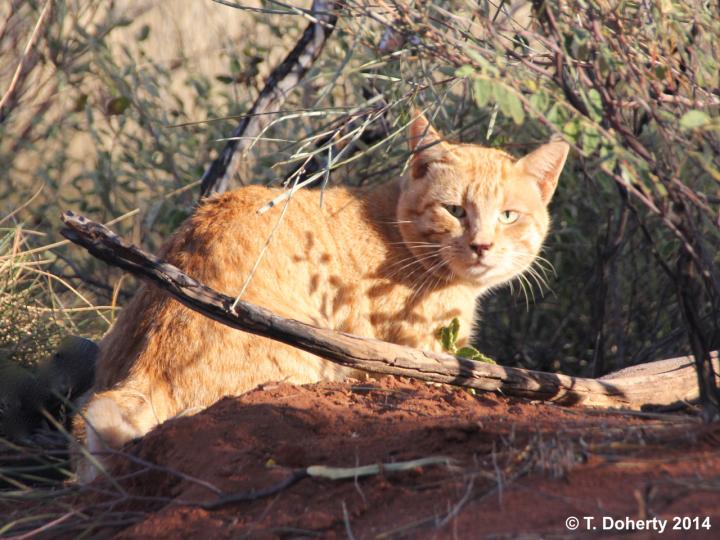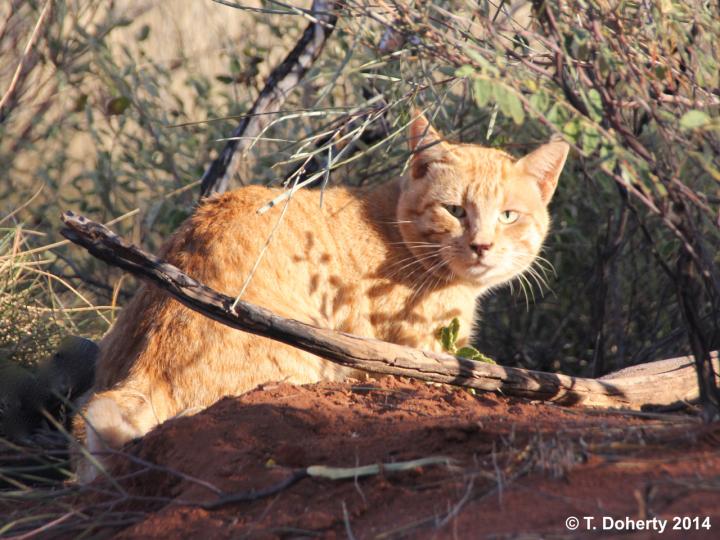
Credit: Dr Tim Doherty
Feral cats are among the most damaging invasive species worldwide, particularly in Australia where they have caused the extinction of more than 20 mammal species. New work has developed priorities for feral cat research and management, including preventing further extinctions, testing new management tools, and increasing potential for native fauna to coexist with cats.
Managing the impacts of cats will be best achieved through a combination of actions, with tools that include guardian animals and grooming traps that spray a toxin onto passing individuals. Careful planning and monitoring are needed to ensure the most cost-effective and ecologically-sound outcomes are achieved from feral cat management.
"Given the urgency of the problem, we need a layered approach, including emergency intervention for species most at risk, and research that improves longer term management of feral cat impacts in larger areas," said Dr. Tim Doherty, lead author of the Mammal Review article.
###
Media Contact
Penny Smith
[email protected]
44-012-437-70171
http://www.wiley.com/wiley-blackwell
############
Story Source: Materials provided by Scienmag





